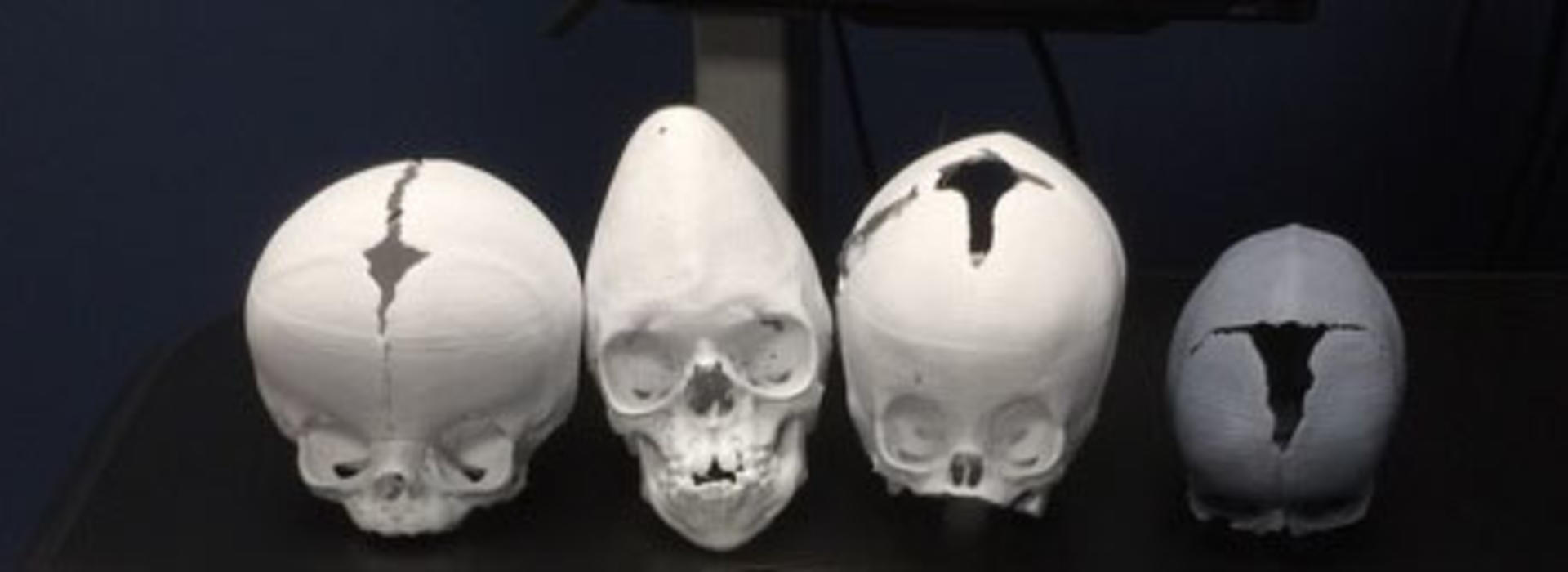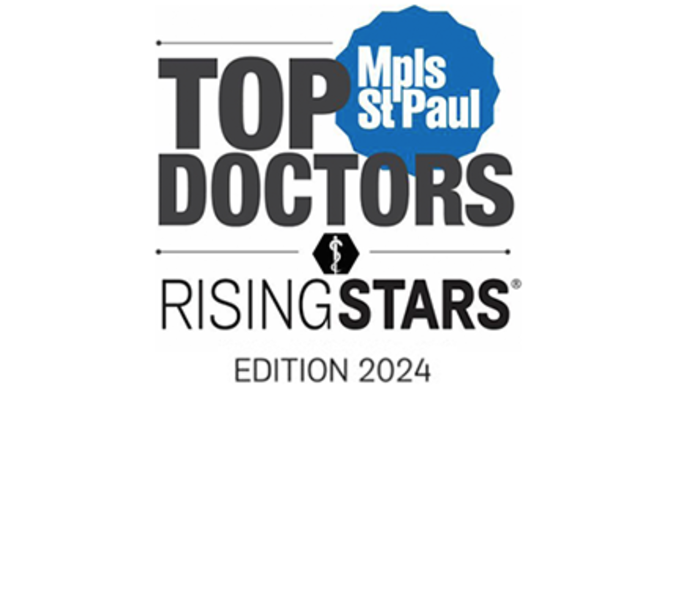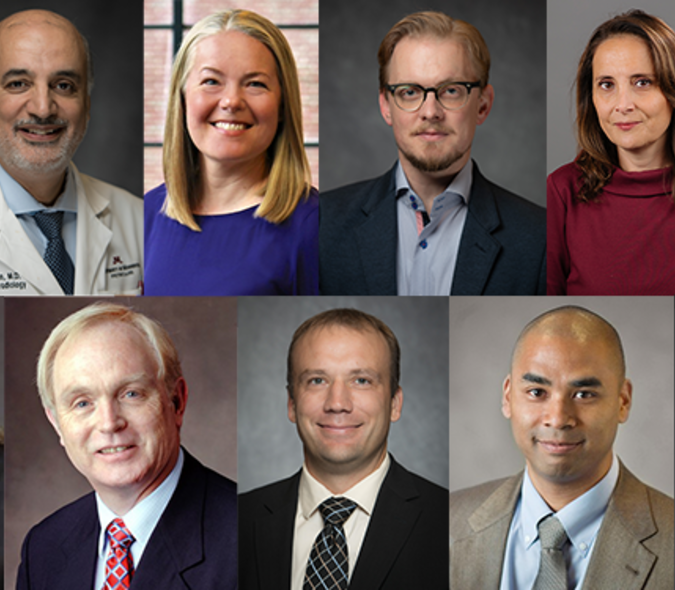
Dr. Nascene Using 3D Printing to Create Educational Models
David Nascene, MD, University of Minnesota Medical School Department of Radiology has been using a 3D printer to create skull models from head CT studies performed on children with skull deformities.
“My initial plan is to print 3D models for educational purposes,” said Dr. Nascene, “The main audience is resident and fellow trainees, focusing on conditions and anatomy that can be difficult to understand from a didactic lecture or from a textbook.”
Dr. Nascene believes giving trainees the ability to hold and view models from different angles will deepen learning.
“These models will add another dimension of understanding and will help us recall that knowledge when a patient needs us to.”
In addition to training the next generation of leaders in this specialty, Dr. Nascene plans to use 3D modeling to help people with spine disorders. He can create prints that can be life-changing to those with congenital and neuromuscular disorders of the spine. He developed a model for a family who felt that the problem was much easier to understand seeing it in 3D.
Dr. Nascene hopes to one day create 3D printing procedural guides to aid surgeons in the operating room.
“Customized 3D-printed implants are not that far off and I’m excited to see where the future takes us,” he said.
If you are interested in working on 3D printed educational projects or just looking to get started with 3D printing, contact David Nascene, MD at nasc0001@umn.edu.



